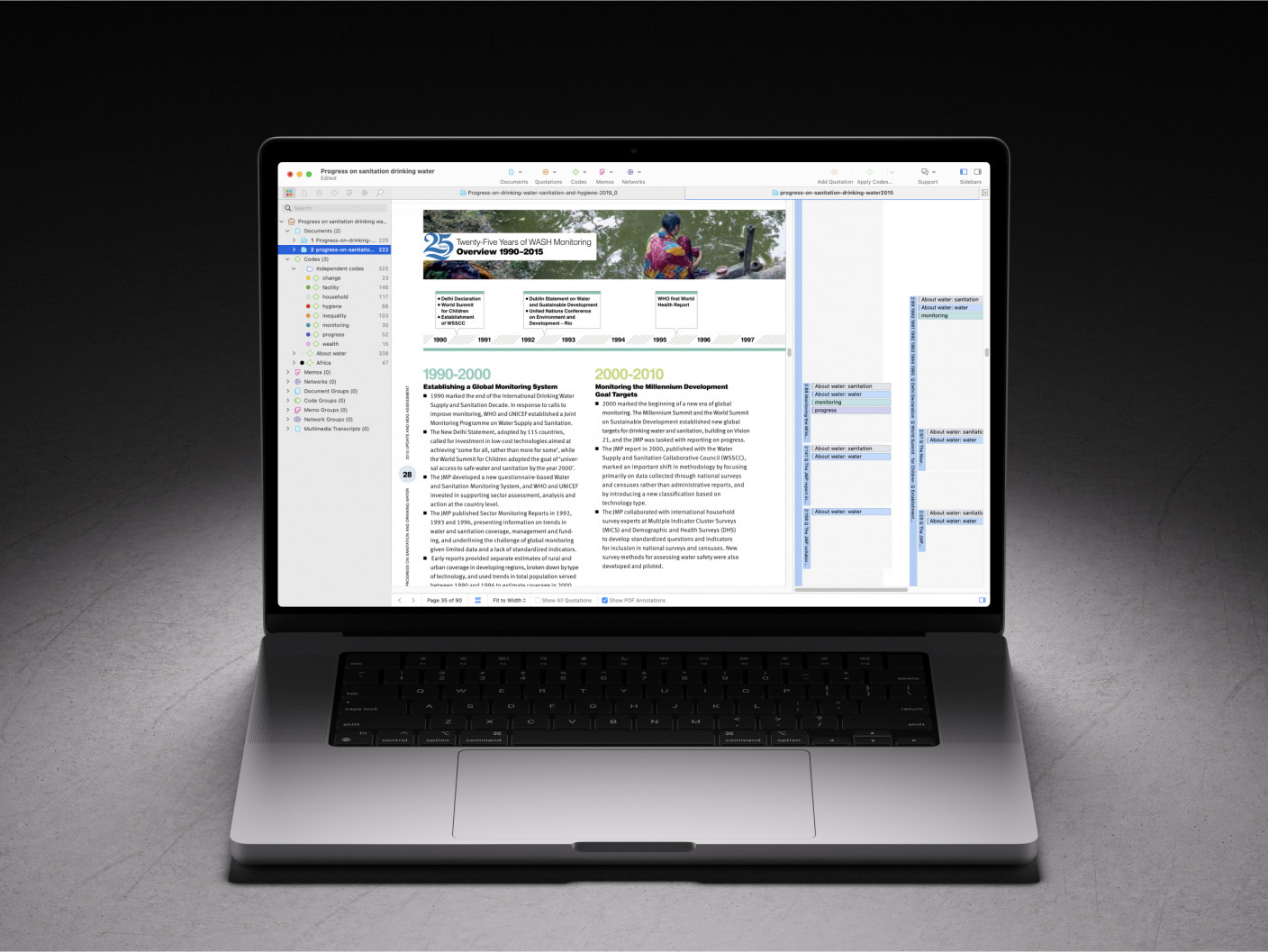Unit of Analysis vs. Unit of Observation | Differences & Comparison
- Introduction
- What is the difference between units of analysis and units of observation?
- Designing a research project
- Applying units of analysis and observation in different research methodologies
Introduction
Understanding the distinction between units of analysis and units of observation is fundamental in qualitative research. The unit of analysis is the primary entity that a researcher aims to understand or draw conclusions about, such as individuals, groups, or institutions. In contrast, the unit of observation refers to the source from which data are collected, which may or may not align with the unit of analysis. Clarifying these concepts contributes to designing a coherent study and ensuring that data collection methods align with research objectives. This article examines the differences between the analysis unit and the observation unit and offers insights into their roles in research design.

What is the difference between units of analysis and units of observation?
Understanding the distinction between units of analysis and units of observation is important for designing effective research. While they are related concepts, they serve different roles in a study and influence various aspects of the research process.
Unit of analysis
The unit of analysis is the main entity that a researcher focuses on when posing the research question. It is the subject about which conclusions are drawn. Units of analysis can vary widely, including individuals, groups, organizations, countries, social interactions, or even artifacts like documents or media content. For example, in a study examining the effects of educational programs on student performance, the unit of analysis might be individual students if the focus is on personal achievement. Alternatively, if the study aims to compare different schools' effectiveness, the unit of analysis would be the schools themselves.
Selecting the correct unit of analysis is critical because it determines how data will be interpreted and the level at which conclusions are made. An inappropriate choice can lead to incorrect inferences or claims. For instance, drawing conclusions about individual behaviors based on group-level data can result in a fallacy. Researchers must ensure that their research questions align with the appropriate unit of analysis. This alignment affects the study's design, data collection methods, and analytical strategies. It also influences the validity of the conclusions drawn from the research.
Unit of observation
The unit of observation refers to the entity from which data are collected. It is the source of the information that will be analyzed. The unit of observation can be the same as the unit of analysis, but they often differ, especially in complex studies. Consider a researcher studying workplace culture within various companies. The unit of analysis is the organization because the goal is to understand and compare cultures across companies. However, data might be collected through surveys administered to individual employees. In this case, the unit of observation is the individual employee.
Another example is a content analysis of news articles to study media representation of certain events. The unit of analysis might be the articles themselves, while the unit of observation could be specific elements within each article, such as word choices or themes. Understanding the unit of observation is key for choosing appropriate data collection methods. It affects how surveys are designed, how interviews are conducted, and how observations are made. It ensures that the data gathered are suitable for answering the research question and that the analysis will be meaningful.

Key differences
The main difference between the unit of analysis and the unit of observation lies in their roles in the research process. The unit of analysis captures what the researcher wants to understand or make statements about, while the unit of observation is about where the data come from.
This distinction matters because it influences how data are collected and how findings are interpreted. For example, if a study aims to make generalizations about communities (unit of analysis) but collects data only from a few individuals within those communities (unit of observation), the findings may not appropriately represent the broader community.
Researchers must carefully plan their studies to ensure that the units of observation provide relevant and adequate data for analyzing the units of analysis. This involves considering sampling methods, data collection instruments, and analytical techniques that align with the research objectives.
Designing a research project
Designing a research project involves careful consideration of how the units of analysis and units of observation fit within the overall study. Proper alignment of these units ensures that the research question is effectively addressed and that the data collected are appropriate for drawing valid conclusions.
Defining the research question
The foundation of any research project is a clear and focused research question. This question guides all subsequent decisions, including the selection of units of analysis and observation. By precisely defining what the study aims to investigate, researchers can determine the most suitable entities to analyze and observe. For example, if the research question is, "How does team leadership style affect employee motivation?" the unit of analysis is likely the team or the leadership style, while the units of observation might be individual employees who can provide insights into their motivation levels.
Selecting appropriate units of analysis and observation
After establishing the research question, the researcher should determine the appropriate units of analysis. This selection should directly relate to the main focus of the study. If the aim is to understand behaviors at an individual level, then individuals should be the unit of analysis. If the focus is on organizational practices, then organizations become the unit of analysis. Once the unit of analysis is determined, the next step is to identify the units of observation. These are the sources from which data will be collected. They should provide the necessary information to analyze the unit of analysis effectively. In some cases, the units of analysis and observation are the same; in others, they differ. For instance, studying the impact of educational policies (unit of analysis) might involve observing classrooms or interviewing teachers (units of observation).
Ensuring alignment between units
Alignment between the units of analysis and observation is essential to maintain the integrity of the research. Misalignment can lead to incorrect interpretations and conclusions. Researchers should verify that the data collected from the units of observation adequately represent the units of analysis. For example, if a study aims to analyze community health outcomes (unit of analysis) but collects data only from healthcare providers (units of observation), there may be a gap between the data collected and the conclusions drawn about the community. Including data from community members would better align the units and strengthen the study.
Choosing data collection methods
Selecting appropriate data collection methods depends on the units of observation and the type of data needed. Common methods include surveys, interviews, observations, and document analysis. The chosen methods should facilitate the collection of detailed and relevant data. For instance, if individual perceptions are important, surveys or interviews might be suitable. If behaviors are being studied, direct observation could be more appropriate. The key is to match the data collection method with the units of observation to gather meaningful information for analyzing the unit of analysis.
Sampling considerations
Sampling involves selecting a subset of units of observation from a larger population. Researchers need to decide on a sampling strategy that aligns with their research objectives. Options include random sampling, stratified sampling, or purposive sampling, among others. The choice depends on factors such as the research question, the units of observation, and practical constraints like time and resources.
Addressing potential errors
Awareness of potential errors related to the units of analysis and observation is important. The ecological fallacy and individualistic fallacy are common pitfalls. To mitigate these risks, researchers should ensure that their conclusions are appropriate for the level of data collected. For example, making inferences about individual behaviors based on only group-level data can lead to the ecological fallacy. Conversely, generalizing group characteristics from individual data may result in the individualistic fallacy. Careful analysis and cautious interpretation help avoid these errors.
Ethical and practical considerations
Ethical considerations are integral to research design. Researchers must obtain informed consent from participants, ensure confidentiality, and minimize any potential harm. Ethical practices build trust and contribute to the credibility of the research. Practical considerations also play a role. Researchers need to assess the feasibility of their study design, considering factors like access to units of observation, resource availability, and time constraints. Adjustments may be necessary to align the ideal research design with practical realities.
Planning for data analysis
Finally, planning how the data will be analyzed is essential. The analysis methods should be suitable for the type of data collected and the units of analysis. Quantitative data might require statistical analysis, while qualitative data could involve thematic coding. Researchers should ensure that their analytical approach allows them to answer the research question effectively. This includes verifying that the data collected from the units of observation can be appropriately aggregated or interpreted at the level of the unit of analysis.
Applying units of analysis and observation in different research methodologies
The concepts of units of analysis and units of observation are integral to various research methodologies in qualitative studies. Their application can vary depending on the methodological approach, influencing how researchers collect and interpret data. In ethnographic research, for instance, the unit of analysis might be a cultural group or community, while the units of observation are the daily practices and interactions of individuals within that group. This approach allows researchers to understand broader cultural patterns through detailed observations of individual behaviors.
In case study research, the unit of analysis is typically a single case or a small number of cases, such as an organization, event, or program. Data are collected from multiple units of observation, including interviews with stakeholders, document reviews, and direct observations of processes. This methodology emphasizes an in-depth understanding of the case within its real-life context.
Grounded theory involves generating theories based on data collected from participants. Here, the units of observation are the participants' experiences and perspectives gathered through interviews or focus groups. The unit of analysis becomes the emerging concepts and categories that form the basis of the theory developed from the data.
Phenomenological research focuses on the lived experiences of individuals regarding a particular phenomenon. Both the unit of analysis and the unit of observation are the participants' descriptions of their experiences. The goal is to distill the essence of the phenomenon by analyzing these descriptions without imposing preconceived notions.
In narrative research, stories told by individuals serve as the units of observation. The unit of analysis is the narrative structure and content, which researchers examine to understand how people make sense of their experiences and construct their identities.
Each research methodology requires careful consideration of how units of analysis and observation align with the research question and objectives. Selecting appropriate units ensures that the methodology is applied effectively and that the findings are meaningful. Researchers must tailor their approach to fit the specific demands of the methodology, whether it involves in-depth interviews, participant observation, or analysis of textual materials.




